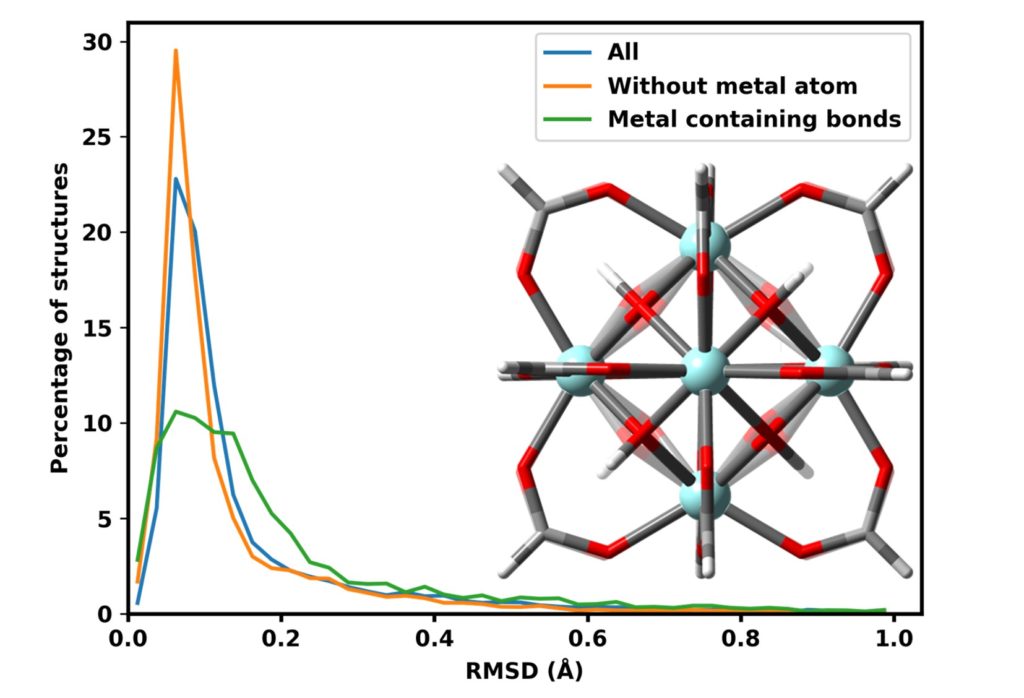Performance of GFN1-xTB for periodic optimization of Metal Organic Frameworks
High throughput computational screening of Metal Organic Frameworks (MOFs) has typically relied on either general force fields that lack accurate non-bonded interactions making adsorption studies impossible, or element-specific force fields that make wide-ranging predictive studies impossible. Grimme’s GFN-xTB is a Tight Binding method, that emphasises accurate noncovalent interactions and is, in theory, intermediate between force fields and Density Functional Theory in terms of speed and accuracy.
A recent study verified the performance of GFN-xTB for the optimization of MOF structures. Periodic GFN-xTB calculations were performed using the Amsterdam Modeling Suite on 10,000 structures from the Computation Ready Experimental (CoRE) database. Optimizations were undertaken with both fixed and variable lattice parameters. Bond lengths were conserved to 0.120 Å, or considering only bonds containing metal atoms, 0.187 Å.

Highlights:
- Excluding breathing MOFs, GFN-xTB reproduces geometries and lattice parameters of 10,000 CoRE MOFs featuring elements Z ≤ 86
- 87.4% of all lattice parameters were replicated to within 10% of the experimental value
- Textural properties (such as surface areas) were also well replicated
- Common inorganic building blocks such as Paddlewheels, oxo-centered M3O trimers, and M4O octahedra are very well conserved (bond lengths to within ±0.1 Å) for all metal atoms
M. Nurhuda, C. C. Perry, and M. A. Addicoat, Performance of GFN1-xTB for periodic optimization of Metal Organic Frameworks, Phys. Chem. Chem. Phys., accepted (2022)
Key conceptsDFTB materials science